Best DV Cameras For You Today!

Every year, during the beginning of the holidays (last part of November, first part of December), I get a very specific kind of question, and this past year was no different. First, it came from Layers VP of Sales, Kevin Agren, as I was walking down the hall; then, it came from about a half dozen people at my church; and finally it came from my neighbor Mike from across the street—they all wanted to know what was the best digital video camcorder for them to get to record their family events that holiday season. Naturally, this is one of those questions that invites me to respond with a barrage of additional questions: Do you want to edit the video on your computer or just show it directly on your TV? How much do you want to spend? Do you want a separate mic hookup? Do you want to capture video in HD? And on and on and on…
Then there’s this problem: At the Consumer Electronics Show (CES) in January, the major camera companies announce new models of consumer video cameras. This makes many who bought cameras during the holidays feel like they should have waited. What they don’t tell you is that most of these new models won’t be available in retail stores until the summer months. They’re just trying to build up some hype and momentum before they send early release models to the various publications to get reviewed.
So what’s a person supposed to do who wants a great video camera now? Today. Right this very moment! Well, the best thing is to look for cameras that have been on the market at least three months and have been tested by both professional reviewers and by your average everyday consumer in forum posts and on sites, such as Amazon.com.
What? You don’t have time to look through the hundreds of models, and then read the thousands of reviews, blog postings, and forum comments to whittle down your options? Then take a look at my following picks for the video cameras that deliver the best bang for the buck. The best part is that you can go out and buy these cameras today. I’ve broken them up in five price categories based on price.
BEST CAMCORDER UNDER $200
I know, it sounds crazy. Can you really find a good DV camera for less than what it will cost to buy a good external drive to edit the footage on? The answer is, yes! The Canon ZR800 miniDV Camcorder comes with a variety of features, including 35x optical zoom, image stabilizer, 16:9 widescreen capability, and an external mic jack—something you can’t get on some camcorders costing two to three times as much. This is the perfect camera to leave in your car’s glove box to catch those unexpected family moments or to document an accident just after it happens.
Over at Amazon.com, some of the commenters complain about the motor noise this camera makes, but believe me, for an average street price of around $175, you’ll notice the money you still have left in your wallet more than the motor noise. And with the built-in mic jack, you can go to Radio Shack and pick up a $20–$40 lavalier mic, pin it to your kid’s jersey, and get an “on-the-field report” after his team’s winning soccer match that will make him feel like he’s on ESPN and make him sound almost as good.
Now don’t expect this camera to be as good as my next pick in the under $500 category. Remember, that camera costs more than twice as much! The Canon ZR800 is missing the ability to take pictures and does poorly recording video in low-light situations. But for the money, and for the fact that you can go to online stores such as B&H (www.bhphotovideo.com ) and get free shipping and a free training DVD on how to shoot and produce better videos, the Canon ZR800 is a steal. [For more information, visit www.usa.canon.com/consumer.]
Note: The Canon ZR900 miniDV Camcorder should be available by the time you read this but I haven’t had a chance to test it yet. The new model should retail for around $250.
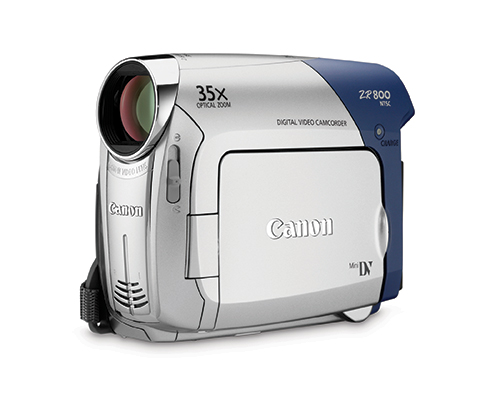
BEST CAMCORDER UNDER $500
Sure, HD cameras and those that record direct to hard disk are all the rage in the media these days, but those aren’t the ones the average family man is looking to buy. In fact, everyone I talked to over the holidays had the same thing in common: They all wanted to buy the best camera they could get for less than $500. That seems to be everyone’s magic price point. They don’t need the latest technology or the newest format; they just want the best bang for the buck!
So here’s my pick: the Sony DCR-HC96 MiniDV Handycam Camcorder, with 10x optical/120x digital zoom, 3.3-megapixel CCD, color viewfinder, and 2.7″ Touch Panel LCD screen. Surprisingly, this is a one-chip (CCD) camera, which means that I usually wouldn’t recommend it (preferring to encourage people to spend a little more for a three-chip camera). However, in test after test this camera does better in low-light situations than most three-chip cameras costing a couple hundred dollars more. This is mainly due to the fact that the one chip in this camera is twice as big as the chips in the other cameras. So you’re getting better quality at a lower price!
This camera also has the distinction of being able to pass analog video through the camera’s FireWire port directly into your computer. This means you can hook up your VCR or old Hi8 camera to the Sony DCR-HC96 and digitize all of your old media with ease. It’s like getting an analog-to-digital converter for free. And the best part is that it has an average street price $479. [For more information, visit www.sonystyle.com.]
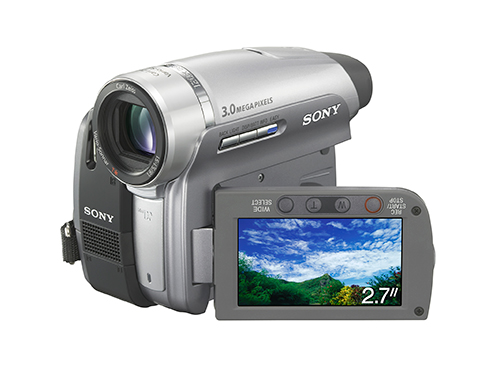
BEST CONSUMER HD CAMCORDER UNDER $1,000
So now that I’ve made my picks for the best camcorders less than $200 and less than $500, we can move onto the category that gets all of the media attention these days: Best Consumer HD Camcorder. You’d think that with all of the choices available and with all of the advertising that has gone into marketing camcorders in this category that this would have been a tough decision for me—but it wasn’t. So this time I’m not only going to tell you which one I picked as a winner, but also which ones I didn’t pick and why.
For me, the winner in this category is the Canon VIXIA HV20 HDV Camcorder, which captures images in the larger HD resolution of 1920×1080 onto a miniDV or miniHDV tape. It uses a 1/2.7″ CMOS sensor chip to capture those images, which tends to process faster than the more standard CCD chip found in a lot of cameras. In this price category, it also tends to capture richer color and sharper detail than its competitors. But my favorite feature is that it can capture footage at the movie film rate of 24p, something that’s practically unheard of at the $750 street price that this camera regularly sells for. (Quick Tip: Turn on the camera’s Cinema Mode when capturing in 24p if you want to try to achieve a more film-like look to your video footage.)
The HV20 also has an HDMI output so you can hook it up directly to your new HDTV, and it has an optical image stabilizer to get you smoother results when you zoom in using the 10x optical zoom. A 3.1-megapixel still camera that records images to a mini-SD card rounds out the cool features found in this camera. I’m a little disappointed that it doesn’t do better in low-light situations (this is where three-chip CCD cameras usually do better), but for the money this is one incredible camera. And speaking of money, a number of online stores are currently offering gift cards or rebates of $75 on this camera, which cuts the effective price down to $675. That means that you can get an HD camcorder for only $175 more than my miniDV camcorder pick. [For more information, visit www.usa.canon.com/consumer.]
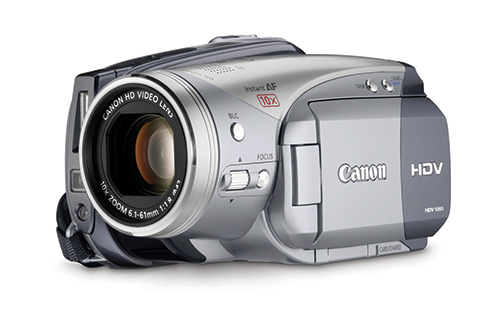
The contenders
I like the Sony HDR-CX7 ($1,099; street price around $850) and the Panasonic HDC-SD1 ($800) because they both record to solid state memory based cards, similar to your digital still camera (the Sony uses Memory Stick PRO Duo cards and the Panasonic uses SD cards). I really feel that this is the way all video recording is going in the near future—away from tape capture and recording directly to a digital file. In fact, the Sony HDR-SR7 ($1,399; street price around $1,200) is a good choice if you want a camera that has a 60-GB hard drive built into it. But the problem with all of these cameras is that they record to the AVCHD format, which is a highly compressed format and is, quite frankly, a real pain to try to edit.
On the Mac, you can use any of Apple’s software (iMovie 08, Final Cut Express 4, or Final Cut Pro 6.0.2) to edit your files, but you’ll find that all three of the programs transcode the AVCHD format into the Apple Intermediate Codec (AIC). This means that your 4 GBs worth of AVCHD video files quickly turn into 40 GBs of crowded editing footage on your hard drive. And on the PC, the only decent AVCHD editing solution is the pro-level Sony Vegas application (retail $585), which costs almost as much as the cameras. All in all, I’m just not sold on the AVCHD format yet.
BEST PRO-LEVEL HD CAMERA UNDER $3,500
So now let’s look at the more professional-level HD cameras costing less than $3,500. These cameras are near and dear to the working professional in the commercial, corporate, educational, and wedding fields, among others. The winner for me in this category is the Canon XH A1, which is an amazing piece of engineering for a remarkable price.
At just more than $3,000 (with rebate), the XH A1 camcorder has three 1/3″ 16:9 interlaced CCDs that capture images at 1080i resolution. The camcorder features selectable frame rates of 60i, 30F, and 24F. This allows you to capture sports at 30 frames or a more film-like look at the 24 frame rate. The 60i frame rate is the current resolution of choice for many reality TV shows.
I really like the great lens, optical stabilizer, and super-fast focus that come standard with this camera. At this price point you’re not able to change out the lens for another, but the 20x Professional L Series Fluorite fixed lens that the XH A1 ships with provides excellent image fidelity. My only complaint is with the onboard mic. You can easily triple the audio quality that this camera records by buying a decent shotgun mic ($500) and attaching it to the included shotgun mount. All in all, a fantastic camera for the price. [For more information, visit www.usa.canon.com/consumer.]
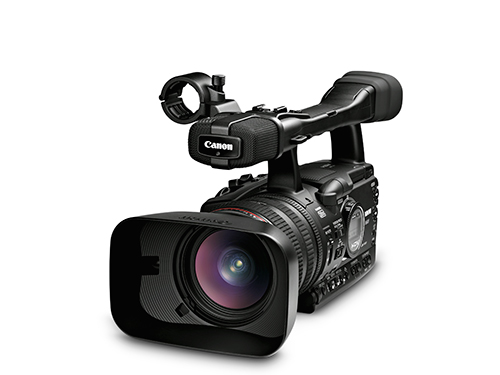
BEST PRO-LEVEL HD CAMERA OVER $3,500
Now this is the category where we pull out all the stops and look for the best of the best—but please don’t take that to mean that I’m including the $75,000 VariCam setup for the next great Hollywood cinematographer. I’m actually just focusing on those cameras less than $10,000 that still deliver a great bang for the buck and also offer a little something extra. And with these criteria, the choice was easy.
Arguably the hottest camera on the market today is the Panasonic AG-HVX200. Every pro I know either already has one or is getting one in the near future. Even podcasters are scooping these up in quantity. My friends over at Photoshop User TV (www.photoshopusertv.com) already have two of these units, and I wouldn’t be surprised if they picked up two or three more before the end of the year. The guys over at DJ TV (www.digitaljuice.com/djtv) also swear by them.
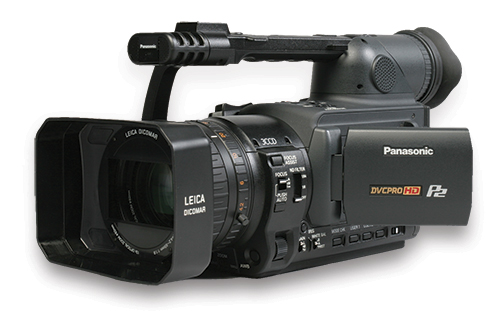
So what’s all the fuss about? Well, the camera is compatible with DVCPRO HD, DVCPRO 50, DVCPRO 25, and consumer DV recording standards. It also uses three wide aspect CCDs for true 16:9 recordings. It even comes with a wide-angle Leica Dicomar HD 13x zoom lens with advanced glass coatings. But the most significant reason it stands out from the pack is that it uses Panasonic’s new P2 memory cards for recording. This disk-based recording medium makes the video immediately accessible to nonlinear editing systems (such as Premiere Pro, Final Cut Pro, etc.) and forever leaves behind the boring task of digitizing video footage from tape.
But this editing ease and technology innovation doesn’t come cheap. While you can get a camera for around $5,200, by the time you add a couple of extra P2 cards and an accessory or two, you’ve easily spent your $8,000 budget in one fell swoop. Ahhh, but as many happy users are eager to tell you, it’s totally worth it. [For more information, visit www.panasonic.com/business/provideo/cat_camcorders.asp.]
Bio
Rod Harlan is a video industry veteran and founder of the Digital Video Professionals Association. Through his company DriveDV Inc., Rod works on special projects for Fortune 500 clients such as Adobe and private institutions such as the NAPP. His popular industry blog is packed with tips, tutorials, and industry insight and can be found at DVconfidential.com.
